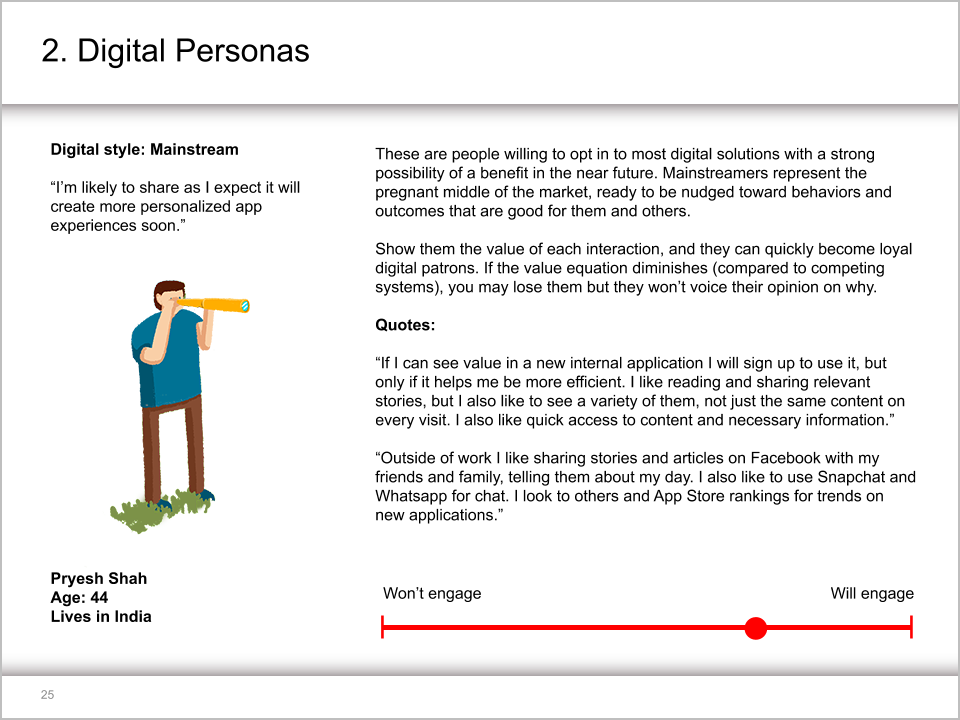Creating Personas Saves You Time, Money and Headaches
A lot of money goes down the drain during the product development process. Yet more cash is splashed and wasted on marketing a product that was never right for your audience in the first place. Brands are then faced with entering the design process and product development all over again. The only way to reduce product development errors from the outset is to understand your target audience beyond identifying a target market using standard demographics.
Creating personas enables you to identify specific customers rather a generic customer base. These essential insights enable you to appreciate the needs, experiences, behaviours and goals of the end-user. When performed properly, the persona fact sheet reveals the pain points of your target audience and enables you to reach product solutions quicker and shape your marketing campaigns. When a client comes to us with a project, we always set up personas so we can plan how end-users will interact with the product.
Knowing who your audience is makes it easier to answer critical questions such as what they need your product for and how it can make their lives easier. Insights that offer value drive decision making which impacts design and marketing strategies. A design team will make fewer errors if they understand what customers want to gain by using your product. Insightful data will eliminate many of the early design ideas and direct the product build towards the objectives of the end-user.
Gathering Data for Personas
Personas are essentially fictional. However, the data you collect to create these insightful profiles are gathered from real people. To create reliable digital personas, only gather data from reliable sources. Don’t rely solely on ideas that fall out of a brainstorm.
A strategic process for gathering reliable data runs as follows:
- Leverage views of stakeholders to clarify initial product objectives and the customer ideal base.
- Get your core team of developers together and brainstorm the goals of the product.
- Interview people. A good starting point is members of staff, existing customers, potential users, existing users that are not customers.
- If possible, review feedback from customers about your existing product or forums and reviews on similar rival products and identify customers pain points and preferences.
- Once you have gathered a sufficient amount of intelligence, patterns should start to emerge that enables you to categories personality types that will form the basis of your persona profiles.
For example, in a recent project we worked on for a digital client, we categorised four personality types of digital users; Digital Nomads, Mainstream Users, Chameleons and Paranoid users. The amount of information you include in your persona profiles will depend on your product and the scope of your target audience. Because or client has a global market in the digital realm, the information we used was kept to a bear minimum, namely:
- Name
- Age
- City/town
- Persona style
- Overview of persona style
- Actual quotes
In addition, you could add:
- Job titles
- Education
- Ethnicity
- Family status
- Technical experience
- Work environment
How Personas Help The Development Process
Creating personas are an inexpensive method of creating user scenarios, thus a vital component which can leverage the success of your product. Despite personas being fictional characters, creating a story and building an impression of your actual audience enables developers to visualise end-users as real people. This helps developers to remove their own feelings from the product design and look at the product from the perspective of the end-user. Knowing who your audience makes it easier to answer critical questions such as what they need your product for and how it can make their lives easier. Insights that offer value driven decision making which impacts design and marketing strategies.
A design team will make fewer errors if they understand what customers want to gain by using your product. Insightful data will eliminate many of the early design ideas and direct the product build towards the objectives of the end-user. During the design thinking process, drafting personas should start at the second phase of development – the Define phase. At this point, designers bring their research and ideas from the Empathise phase to identify which ideas to use and which can be scrapped.
When there are several stakeholders involved in a project, there can often be several design ideas which the originators are attached to. Emotional, or stubborn decision making can lead product development down the wrong path. Personas reveal the frustrations and pain points of your audience and enable you to identify which ideas provide the most value. They also enable you to improve initial ideas and facilitate the evolution of the product and provide benefits that matter.
Once you have drafted all your known personas, share the results with everyone; the development team, sales team and marketing team. Each team should add to the story in order to work towards the best solutions. With informed data, developers understand how to cure pain points, marketers understand how to interest prospects and the sales team know how to craft the sales pitch. In short, personas enable you to see the bigger picture – and not just imagine it.
Do you want to know more about how personas can provide a successful pathway to application development? Drop us an email at info@sbanimation.com, or give us a call on +44 (0)207 148 0526











